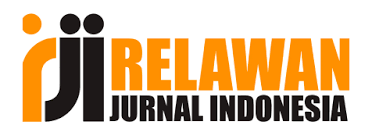Character System and Poetics in Uzbek and Turkish Folk Fairy Tales: a Comperative Analysis
Abstract
Fairy tales are a key history genre that both demonstrates how folklore serves as a vehicle for cultural values, social norms and moral lessons. They are an important vehicle for reflecting the collective imagination of a community. Drawing on conceptual frameworks developed by Vladimir Propp, E.M. Meletinsky, and other leading folklorists, this study analyses the character systems and poetic features of Uzbek and Turkish folk fairy tales. The study examines the character in such stories in terms of how they are used symbolically and narratively. Though motifs and archetypes in single traditions have been the focus of previous research, studies that comparatively link Uzbek and Turkish folk tales with a single Turkic focus are scarce. The goal of the paper is to find the types of characters, their functions in the narrative structure and poetic characteristics of these stories. It also aims to identify commonalties and differences in the culture exhibited between fairy tales of the two traditions. The study found that while the traditions have common archetypes of heroes, villains, and helpers, significant differences emerge shaped by cultural, historical, and religious influence. Gender roles and symbols like mountains and rivers feature deeper cultural significances. This aspect of the comparative study helps to gain knowledge on the universal features of fairytales within the cultural context. The actualities reflects on the persistent importance of folk fairy tales as instruments in developing cultural identity and provide meaningful indirect evidence of the ways myth is integrated with modern cultural narratives.
References
M. Afzalov, O‘zbek xalq ertaklari. Toshkent: Fan nashriyoti, 1979.
K. Imomov, O‘zbek xalq nasri poetikasi. Toshkent: Fan, 2008.
P. N. Boratav, Az Gittik Uz Gittik Masallar. İstanbul: Tercüme ve Yayın, 1969.
P. N. Boratav, 100 Soruda Türk Folkloru. İstanbul: Gerçek Yayınevi, 1958.
M. Ekici, Türk Dünyası Ortak Edebi Motifleri. Ankara: Atatürk Kültür Merkezi Yayınları, 1999.
E. M. Meletinsky, Geroi volshebnoi skazki: Proiskhozhdenie obraza. Moskva: Nauka, 1986.
V. Ya. Propp, Zhanrovyi sostav russkogo fol’klora. In Fol’klor i deistvitel’nost’, Moscow, 1976.
D. Yıldırım, “Türk Masallarında Kadın Karakterlerin İşlevleri,” Milli Folklor, vol. 10, 2010.
Z. B. Choriyeva and F. U. Eshkobilova, “Linguistic-Cultural Features of the Comparative Analysis of Themes and Forms of Uzbek and English Folklore,” American Journal of Philological Sciences, vol. 2, no. 11, pp. 48–56, 2022.
N. K. Kultanbaeva, “Structural Features of Kazakh and Arabian Fairy Tales,” in Actual Questions and Innovations in Science 2, pp. 311–314, 2019.
G. A. Alexandrovich, G. P. Alexandrovich, and B. O. Victorovna, “The Comparative Analyses of the Pretext and Mental Content of Turkish and Russian Fairy Tales,” International Journal of Russian Studies, vol. 5, no. 2, 2016.
K. Talieva, A. Kanybekova, S. Zhumaliev, and G. Stanalieva, “Symbolism and Functions of Marriage Motifs in Turkic Epics and Selected European Works (Fairy Tales, Legends) and Their Transformation in Modern Narrative Fiction,” Papers in Literature, vol. 13, pp. 215–238, 2025.
M. G. Bahodirovna, “Comparative Study of Uzbek and Turkish Fairy Tales,” Galaxy International Interdisciplinary Research Journal, vol. 10, no. 2, pp. 671–673, 2022.
S. Ibrohimbek and O. Shohista, “Contrastive Analysis of Linguocultural Features in Uzbek and English Folk Tales,” Tadqiqotlar, vol. 62, no. 2, pp. 5–11, 2025.
S. Tursunboyeva and Q. N. Abdulboqiyevna, “Linguistic and Cultural Characteristics of English and Uzbek Folk Tales,” Western European Journal of Modern Experiments and Scientific Methods, vol. 2, no. 2, pp. 48–51, 2024.

















